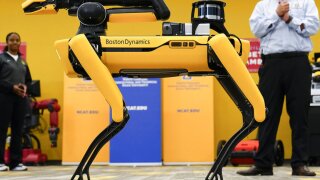U.S. companies adopting robots as a workforce increasing at an unprecedented rate

The number of companies in North America that adopt robot workers is growing at a rate that has never been seen before.
The Association for the Advancement of Automation reports that during the second quarter of 2022, businesses placed orders for a record-setting number of 12,305 machines. That is a 25% increase in comparison to the same time period a year earlier.
“The pandemic definitely highlighted some areas and shortages in resources needed to be automated, and customers had to automate just due to the fact that people weren’t coming back to the workplace,” FANUC North America Vice President Louis Finazzo said.
“For a long time, the automotive industry accounted for 60 to 70% of robot orders,” Association for Advancing Automation President Jeff Burnstein said. “And we knew that when other industries started adopting is when we would really see growth, which is finally happening now, in part due to the pandemic forcing companies to look at other options when they couldn’t bring people into work.”
According to Burnstein and Finazzo, the businesses that are helping to drive this rising need for robots vary from the production of food to medicine.
E-commerce companies are very interested in buying these robots because they can help pick up packages and get them ready for delivery.
However, if the purpose of these robots is to increase production, then it does not seem that this has been achieved. Since the government first started keeping track of this data, the United States saw its greatest rate of productivity decline during the second quarter of 2022.
Robots may be able to assist with the work that has to be done for companies, but it will take some time before such machines are fully operational. On top of that, they will need people who have been specifically trained.
“The lack of people who are available to install and maintain, operate, program and take advantage of all the data — this is a barrier, actually, to further adoption of robotics,” Burnstein said. “We have to put more emphasis on teaching people the skills they need because we all have to benefit in an increasingly automated future.”
The fast pace at which robots are being adopted into the workplace has impressed several industry experts. The transition to a mechanical future is well under way.
“The adoption curve used to be 50 weeks; now it’s been cut into the 21-week range,” Finazzo said. “So, you will see gains happening quicker because the customers and the manufacturers are picking applications that can get immediate impact.”




